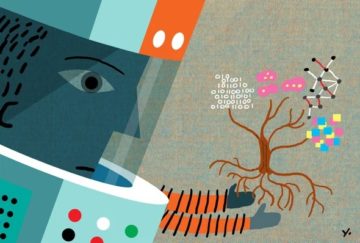Shi En Kim in Scientific American:
 What is life? Like most great questions, this one is easy to ask but difficult to answer. Scientists have been trying for centuries, and philosophers have done so for millennia. Today our knowledge is so advanced that we can precisely manipulate life’s building blocks—DNA, RNA and proteins—to build biological machines and engineer new genomes. Yet despite all we know, no universal consensus currently exists on life’s fundamental definition.
What is life? Like most great questions, this one is easy to ask but difficult to answer. Scientists have been trying for centuries, and philosophers have done so for millennia. Today our knowledge is so advanced that we can precisely manipulate life’s building blocks—DNA, RNA and proteins—to build biological machines and engineer new genomes. Yet despite all we know, no universal consensus currently exists on life’s fundamental definition.
The reason life’s definition still eludes us is simple: we know of just one type of life—the kind that exists on Earth—and it’s challenging to do science with a sample size of one. This is the so-called N = 1 problem (wherein “N” denotes the number of eligible candidates that scientists can study). No matter how ingenious researchers may be in divining life’s general principles from the single instance of which they’re sure, they have no way of confirming whether they’ve done so successfully until N increases. Searching for another instance of life—whether it’s found right here on Earth, elsewhere in the solar system or beyond—is one way to expand N. The search has scarcely begun, but it has already consumed billions of dollars and countless hours of labor, even though there is no guarantee that a discovery will ever come.
More here.
